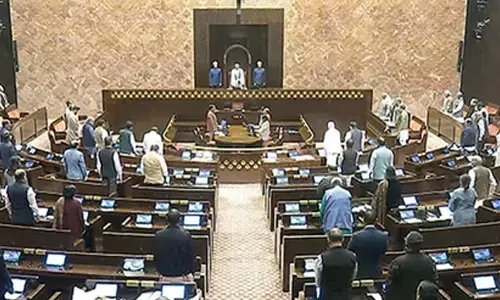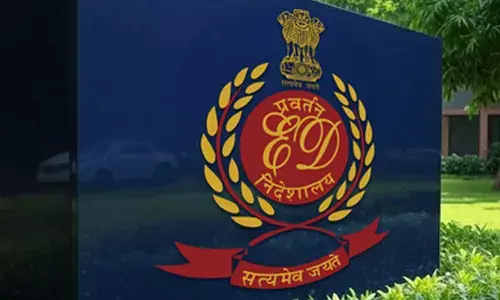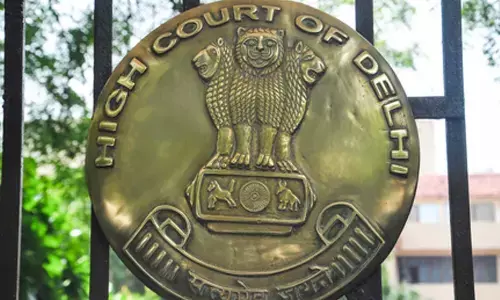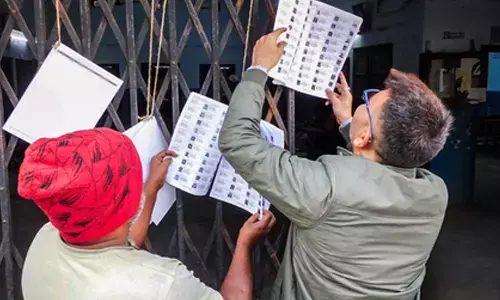Jharkhand unleashes mass displacement

Jharkhand\'s decision to allow the use of tribal land for non-agricultural purposes could lead to mass displacement The Jharkhand government has achieved what even the British rule could not complete alienation of the tribal population from their land.
Jharkhand's decision to allow the use of tribal land for non-agricultural purposes could lead to mass displacement The Jharkhand government has achieved what even the British rule could not complete alienation of the tribal population from their land. Amendments to the Chota Nagpur Tenancy Act (CNT Act) of 1908 and the Santhal Pargana Tenancy Act (SPT Act) of 1949, passed on November 23 by the Jharkhand Legislature, allow use of tribal land for non-agricultural purposes by the government. Earlier, the government could take over land only for public welfare activities.
In May 2016, the government issued the Chota Nagpur Tenancy Act 1908 (Amendment) Ordinance and the Santhal Pargana Tenancy Act 1949 (Amendment) Ordinance, which led to widespread protests. There were three incidents of police firing in Ramgarh, Hazaribagh and Khunti districts in August and October, in which eight people were killed and over 20 injured. The Amendments regularise the Ordinances and are waiting President’s assent to become a law.
“We don’t know where we will go,” says a visibly worried Gangia Devi, 65, sitting in the courtyard of her house in Baseria village of Hazaribagh. Flanked by mountains on three sides, the village does not have an accessible road. Her village is one of more than 20 villages that have to make way for a 1,980 MW North Karanpura Super Thermal Power Project being set up by the National Power Thermal Corporation (NTPC) at a cost of Rs 15,000 crore.
Gangia Devi belongs to one of the 10 families of the Oraon tribe who live in the village. In the past 55 years, these families have been relocated twice for “developmental” reasons. Both the times the families were not rehabilitated by the state and had to find a new home on their own…
What has changed? Under the SPT Act, no transfer of urban or rural land is allowed. It can only be inherited. The CNT Act is a little more lenient and allows transfer of land within the same caste and geographical limits, but with the approval of the District Collector.
But the Amendments allow the use of agriculture land owned by schedule tribes, schedule castes and other backward castes for industrial and commercial purposes. The addition of Section 21 (B) in the CNT Act and Section 13(A) in the SPT Act by the Amendments allow the state government to frame rules from “time to time” for non-agriculture use of the land in the given geographical areas. Experts say the changes allow easy transfer of land through the backdoor.
“The use of ‘time to time’ wording clearly shows mala fide intention of the state government. For instance, two years from now the government might decide that a hotel is needed for the development of an area, and sell land to a private developer,” says Stan Swamy, a Ranchi-based social activist who works for tribal rights.
In the name of investment
These changes, the state government says, will improve the investment climate in the state. Jharkhand is organising Global Investor Summit Jharkhand 2017 in February. The Chief Minister himself has been doing road shows in Mumbai, Bengaluru, Hyderabad, Kolkata and Delhi since September and has boasted of having a “land bank “of 3,34,207 hectares (ha) in 10 districts of the state. This is almost 5 per cent of total area of the state and more than twice the area of Delhi. The land pieces include government land and forest land in cities including Adityapur, Bokaro and Ranchi, and the Santhal Pargana Industrial Area…
Fudging the records
Swamy, who has studied land records of several districts of the state, says, “In Khunti district, for instance, records show that practically all the land, except the family-patta land, has been marked as gairmajurwa (“land without a labourer” or government land). But there can never be a gairmajurwa land in villages of Khunti district because all the villages are designated as Mundari Khuntkatti in government records. These are the villages that have been inhabited by people of the Munda tribe for ages.
They either belong to individual families or the village community…”Swamy estimates that around 20 per cent of the area that now constitutes Jharkhand has been diverted for development of mines and dams since Independence. “Around 1.6 million ha of the state’s total area of 8 million ha has been diverted since Independence. It has caused displacement of around 4 million people,” he says. The first chief minister of Jharkhand, Babulal Marandi says that there is a need to rethink the acquisition method. “Methods used for acquisition and compensation earlier can’t be applied now. No one wants to give land. We have to think of a different approach,” Marandi says.
Eighty-eight-year-old Johan Nag of Bichaguttu village in Khunti district says that his grandfather, who fought along with Birsa Munda, a tribal leader belonging to the Munda tribe, against the repressive British agrarian policies, told him that Birsa foresaw this scenario. “Never be complacent about your rights. This battle would have to be fought again and again,” Nag quotes Birsa Munda in the words of his grandfather. The prophecy, it seems, has come true. (Courtesy: http://www.downtoearth.org.in/)
By Jitendra



















